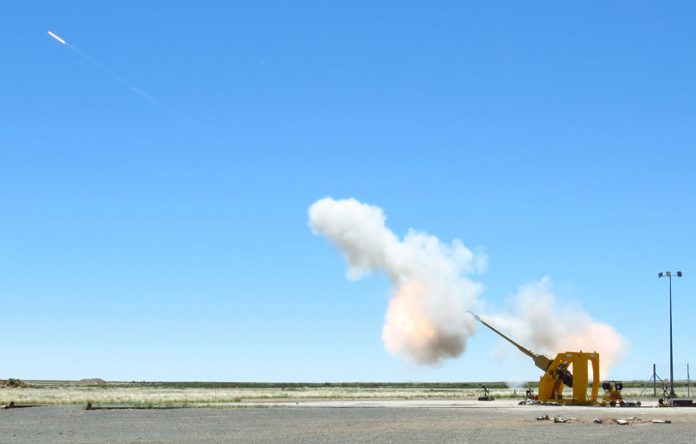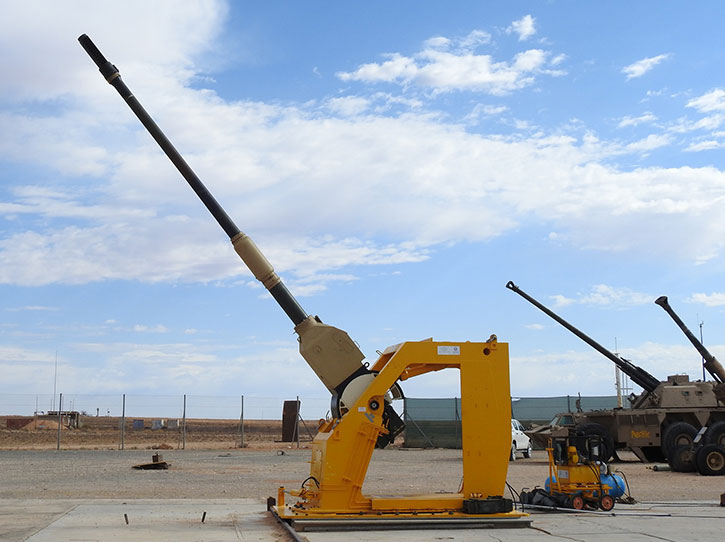
In a recent firing series held in South Africa, the German-South African joint-venture Rheinmetall Denel Munitions (RDM) demonstrated a dramatic increase in the range of its artillery firepower. The demonstration employed three 155 mm cannons with 52 and 39 caliber lengths, which scored three world records – firing at ranges of 76, 67 and 54 km.
The South African G6 built by Denel scored the longest shot in those tests, firing to a range of 76 km, the longest shot ever scored by a 155mm cannon. To achieve this shot RDM used a Zone-6 charge to propel an inert M9703 Velocity Enhanced Long-Range Artillery Projectile (V-LAP). The G6 is not restricted by the NATO accepted Joint Ballistics Memorandum of Understanding (JBMoU) and has a larger chamber, packing more propellant charge accelerating the Assegai to the longest range possible. The propellant manufacturer Nitrochemie is preparing a new top-charge for this non-standard 25-liter chamber that could exploit the system’s dimensions to maximize performance. The new top-charge will be tested next year. The G6 is used by the South African Army, as well as the UAE and Oman.
Other shots used the NATO standard L52-23l cannon that was mounted on a firing rig. This is the same gun used by seven NATO countries on the PzH2000 self-propelled howitzer. This gun lobbed 67 km range firing Rheinmetall Dennel’s Assegai M2005-V-LAP ammunition with a special top-charge produced by Nitrochemie. This top-charge complies with the gun’s JBMoU-compliant 23-liter gun chamber. PzH 2000 is one of the most common artillery systems in NATO, used by Germany, Italy, Netherlands, Greece, Lithuania, Croatia and Hungary. In 2015 Qatar became the first non-NATO as a PzH 2000 user.
Even the 155/39 mm scored an impressive shot reaching a range of 54 km firing the Assegai high explosive M2005-V-LAP, an unprecedented record for the system, that fires rocket-assisted rounds at much shorter ranges.
Extended Artillery Range![]() Analysis requires Member Access
Analysis requires Member Access

The German-South African joint venture Rheinmetall Denel Munition (RDM) hosted the event, welcoming participants from several NATO nations. “Our goal is to be a true partner to the military. That’s why transparent cooperation and trust are so important to us.” RDM Managing Director Jan-Patrick Helmsen said, “Tube artillery can provide defensive and offensive fire support. It’s cheaper and faster than rockets or air support, can operate around the clock, and engage targets with great precision using indirect fire anywhere within its range. Of course, range has proved to be a limiting factor in recent years, giving rise to the need for increased operational reach.” Helmsen added.
“We’re known for the Assegai family and our V- LAP round, the longest-range conventional artillery projectile. The combination of South African technology and German expertise has already resulted in enhanced range, effectiveness, and precision. When it comes to artillery, Rheinmetall takes a totally holistic approach”, Helmsen noted.



















